Must-see locations of Ai Weiwei’s expansive ‘Good Fences Make Good Neighbors’ exhibit in New York
- Share via
Chinese artist
Now the artist turns New York City into his personal canvas in crafting another way to communicate what it means to be uprooted and what it means to feel trapped.
“Good Fences Make Good Neighbors,” the phrase Robert Frost used in his 1915 poem “Mending Wall,” is an expansive public art display of sculpted cages, fences and banners at 300-plus locations in the city, from Manhattan to Brooklyn to Queens.
It opened Oct. 12 and will remain through Feb. 11.
Nicholas Baume, director and chief curator of the Public Art Fund, worked with Ai on the project that weaves his artwork into the fabric of the city. “It’s impossible to really understand it until you have that experience, and people are just blown away,” Baume said of walking in and out of the sculptures.
Here are some of the locations not to miss in this exhibit that’s free to all.
1. ‘Arch’
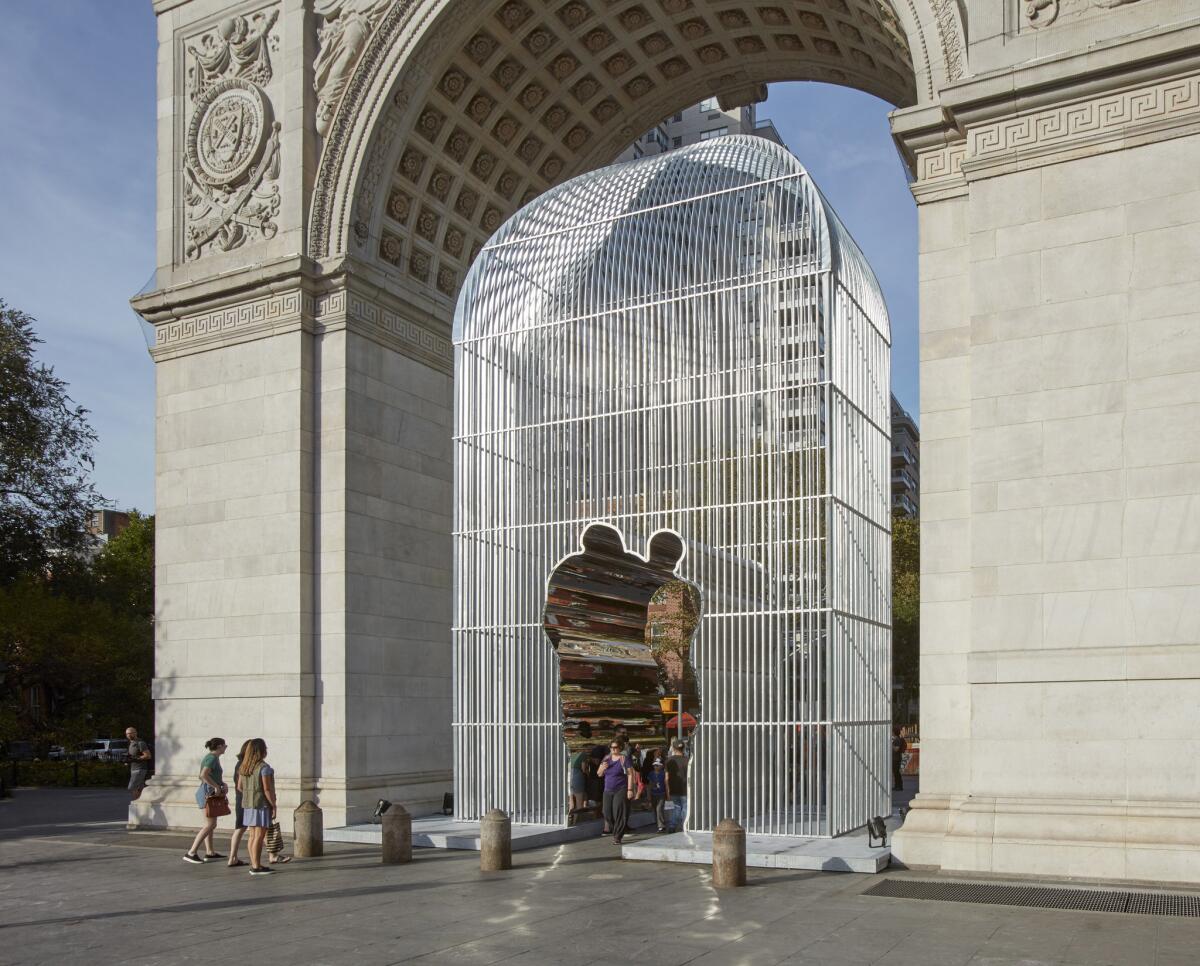
“Arch” is a cage that fits inside the Washington Square Arch in Greenwich Village that has a cutout for visitors to pass through. Baume recommends going on a late afternoon when sunlight sometimes sets its galvanized and polished steel ablaze. You can walk through the arch while experiencing the barrier.
2. 'Gilded Cage'
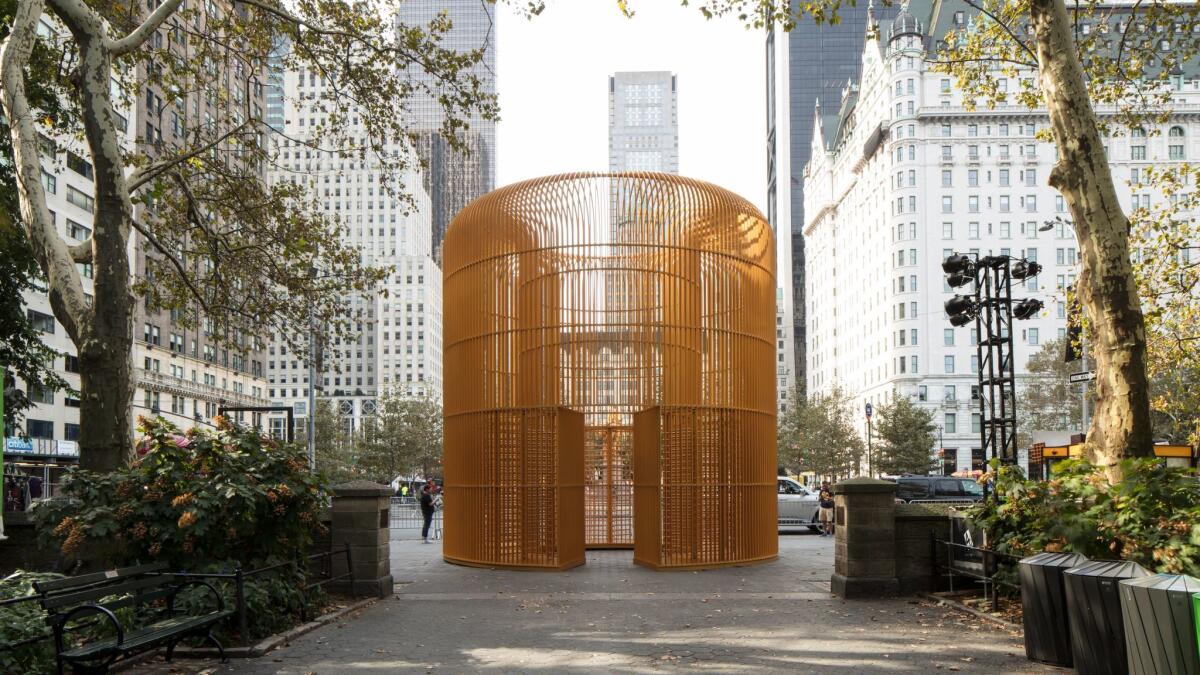
“Gilded Cage” is a free-standing sculpture in Central Park that Baume refers to as having a certain “sinister beauty.” The idea, of course, is to experience the feeling of being put in a cage — with turnstiles and bars — but also knowing you can escape.
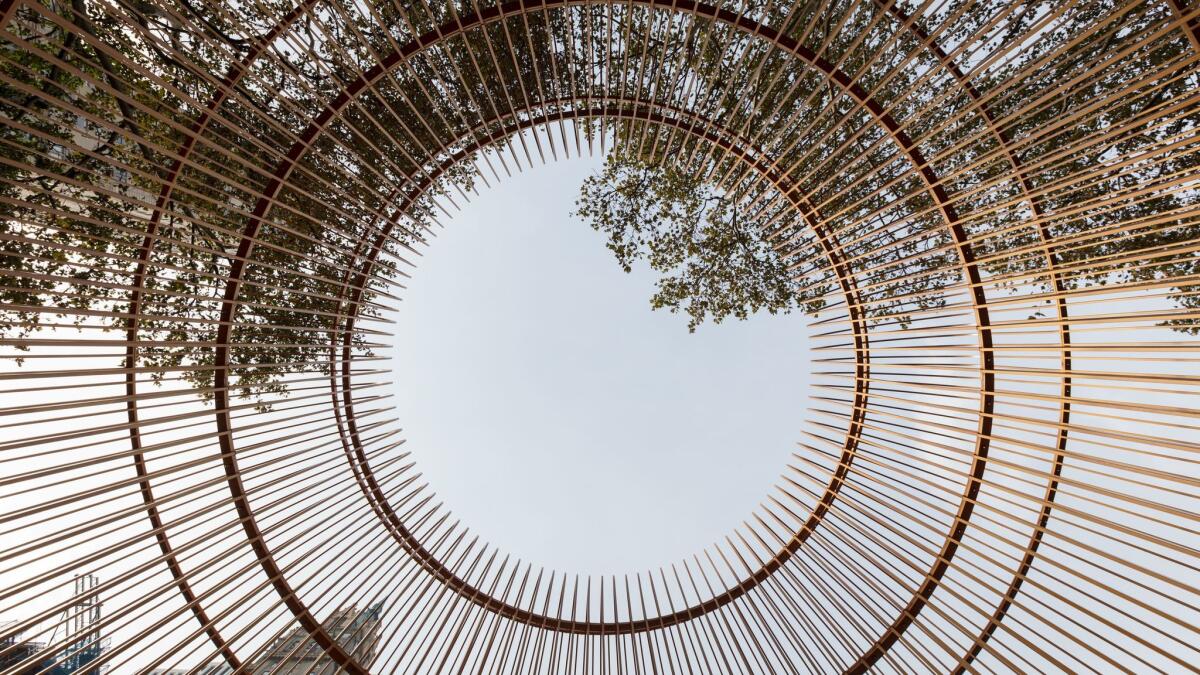
The New York Post reports: “Ai said that he decided to paint this Central Park cage gold in an ironic nod to Fifth Avenue's former resident,
2. Lamppost banners
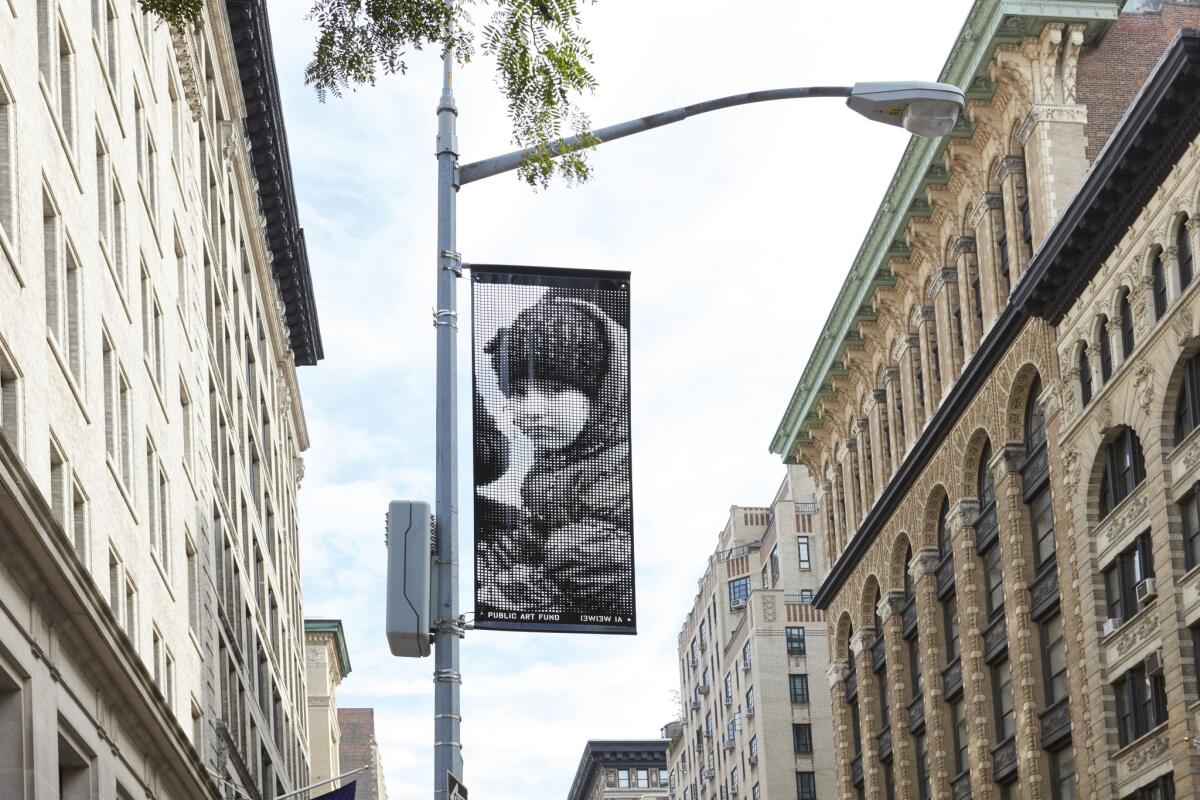
Don’t overlook what you may think is a promotion for the exhibit (which it is, but not in an advertising sense). More than 200 banners in all five boroughs are part of the display. You may see “a 19th century immigrant to Ellis Island, you might see the face of Sigmund Freud, or a young refugee in a camp in the Middle East,” Baume says. The portraits are made on see-through mesh material.
4. 'Circle Fence’
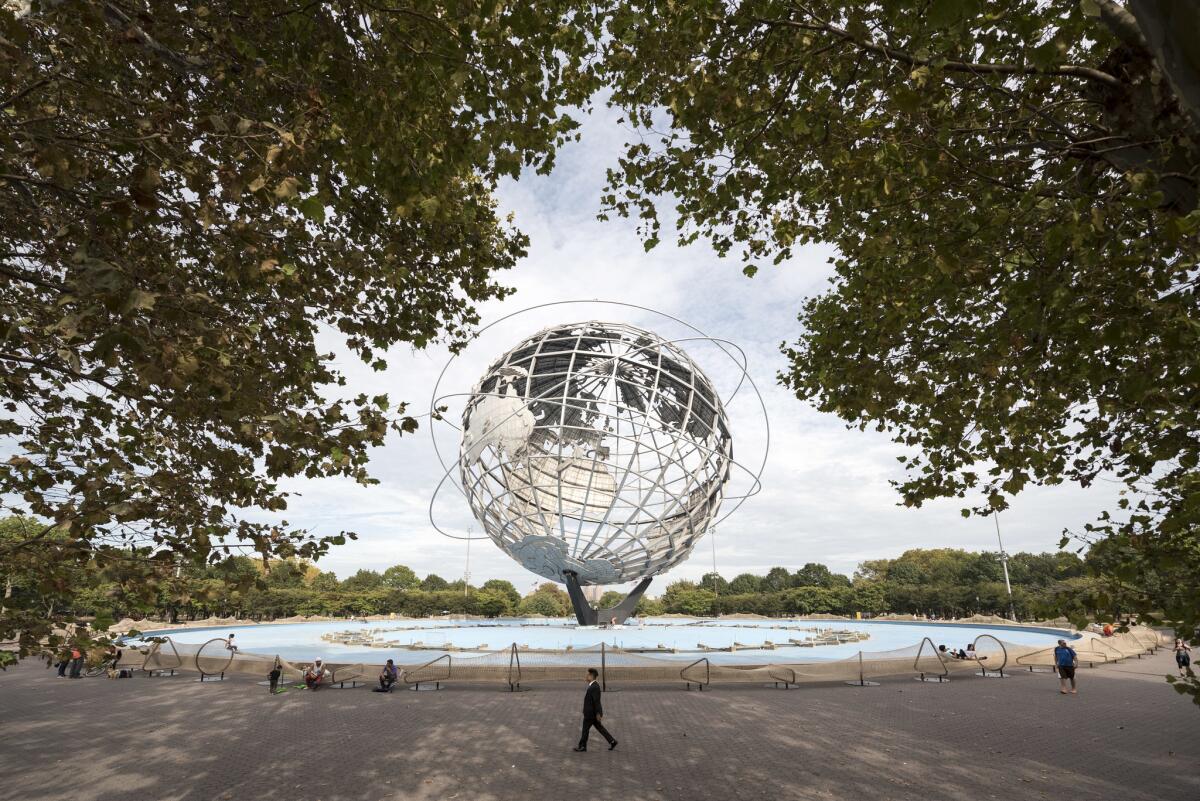
The Unisphere, which is 140 feet high, is the best-known remnant of the 1964 World’s Fair in Queens. Ai surrounds the base of the landmark with a low rope fence. “It’s a playful, interactive piece sort of like a hammock,” Baume says.
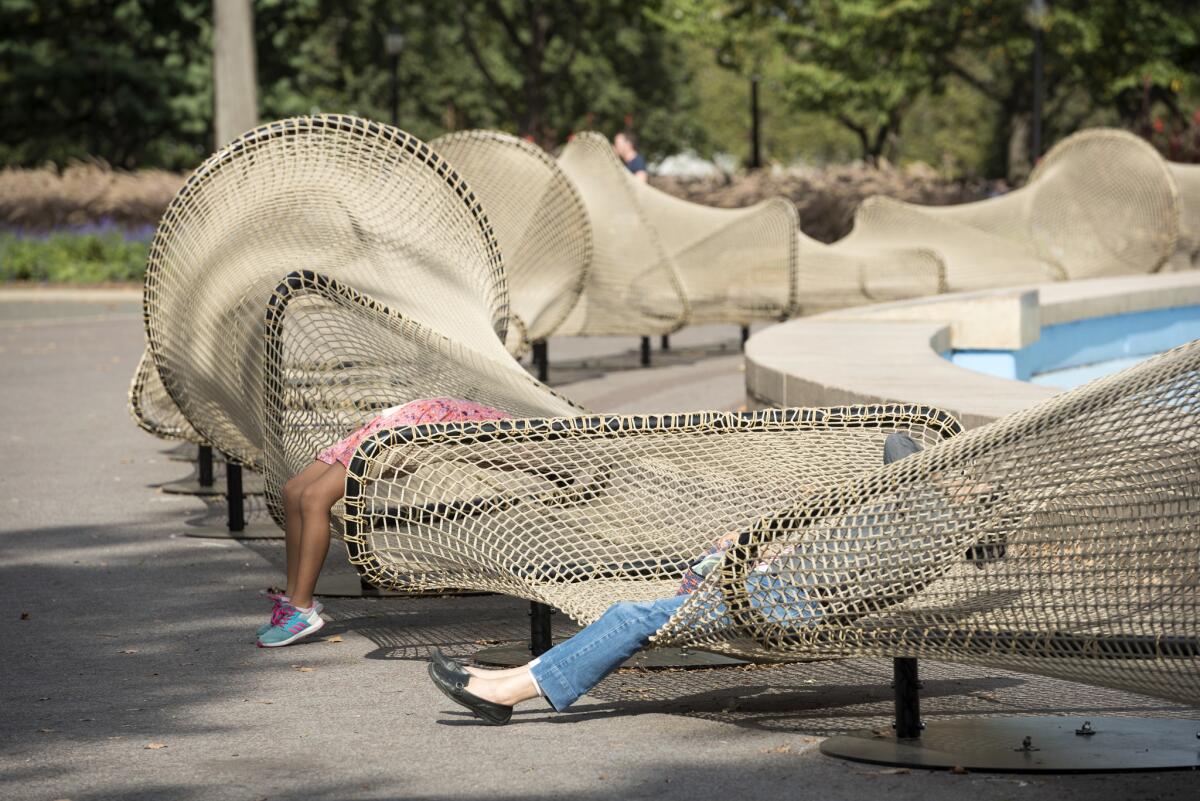
To see the whole exhibit or individual pieces, check out the interactive map on the Public Art Fund’s website.
ALSO
Sign up for The Wild
We’ll help you find the best places to hike, bike and run, as well as the perfect silent spots for meditation and yoga.
You may occasionally receive promotional content from the Los Angeles Times.




